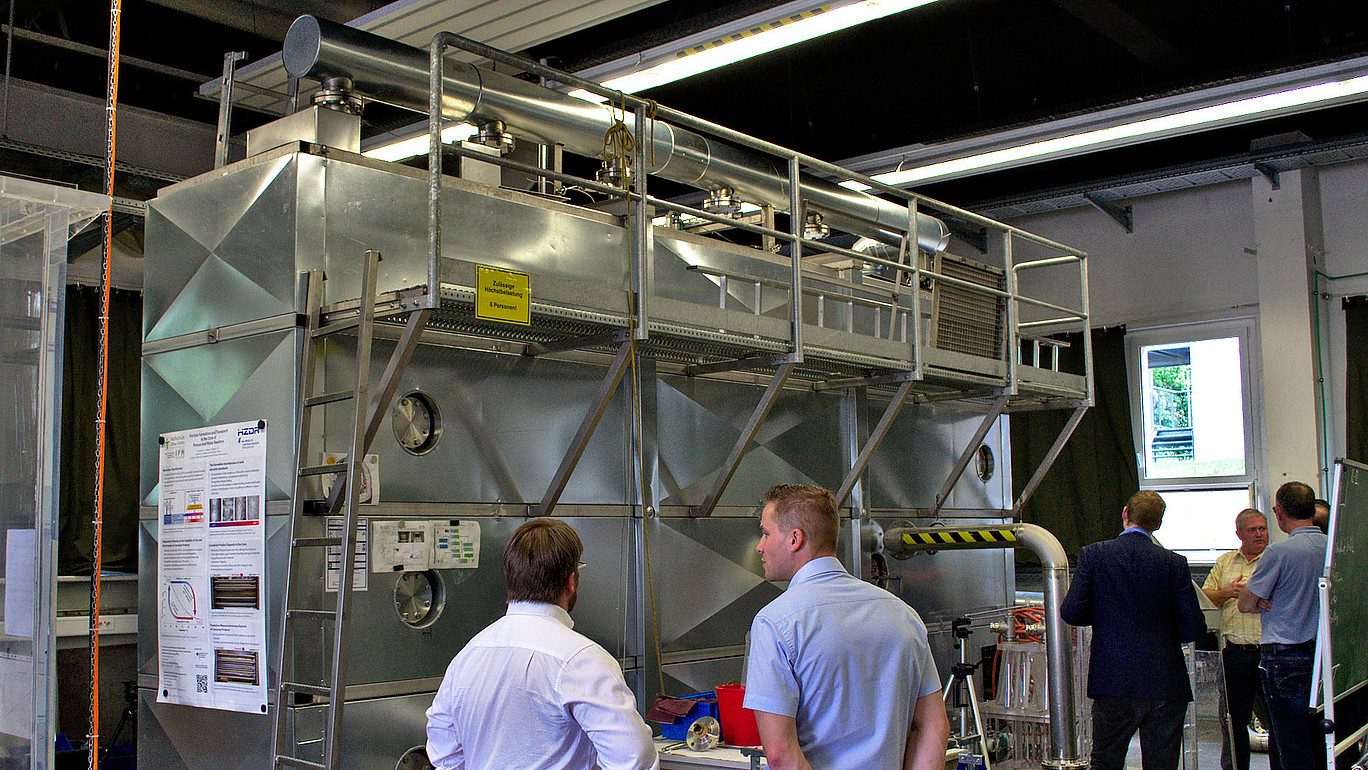
At the Applied University Zittau/Görlitz studies within the scope of nuclear safety research are perfomed together with the TU Dresden and the Helmholtz Centre Dresden-Rossendorf (HCDR). They serve clarification of physicochemical mechanisms and their influence on thermofluid-dynamical processes, which may follow Loss-of-Coolant-accidents (LOCA).
Because of corrosion of zinc-coated components zinc ions can be dissolved in boron-treated coolant. In focus of the first set of investigations were the properties of the coolant on hot surfaces, like they are in hot reactor cores of PWR. It became apparent that turbidity can happen, followed by precipitation of zinc borate particles. The latter may not only have different appearances, but may also affect the dissipation of heat from the surfaces.
Currently under investigation are states and conditions which can cause a threat to core cooling. They will be reproduced in test stands in semi-technical scale. With it emerging chemical and thermodynamic effects of zinc dissolution and the precipitation and deposition behaviour of the zinc corrosion products can be detected.
The projects are funded by the Federal Ministry of Economic Affairs and Energy (BMWi). Technically they are accompanied by representatives of the research supervision of the project sponsor and by consultants, manufacturers and operators.
The results will be used, among other things, in simulations that serve to assess the safety of plants for various accident scenarios.
This project was/is funded by the Federal Ministry of Economic Affairs and Energy (BMWi) using the funding sign FKZ 150 1491 and 150 1585A because of the decision of the German Federal Parliament (Deutscher Bundestag).
Machine transformers represent an important link in the power supply chain. Damage to these large components leads to high repair costs. In addition, when transformers are damaged, block units are no longer available to the power supply network. This leads to high consequential costs, which can exceed the amount of the actual damage many times. Condition monitoring is therefore necessary to ensure the operational reliability of machine transformers and to increase their availability.
Numerous parameters of the transformers are recorded and monitored by the monitoring systems installed for this purpose. The data volume can vary with regard to the number of recorded parameters and sampling rate. Based on these recorded parameters a software tool will be created by the Applied University Zittau/Görlitz in cooperation with the Lausitz Energie Kraftwerke AG to estimate the actual state (diagnosis) and to predict future states (forecast) of a machine transformer.
For provision of diagnostic assertions the processing of data takes place using so-called unsharp fuzzy algorithms, which contain expert knowledge in form of rules. Based on the provided data future parameter values are estimated using a prediction method. From that, however, guidance for further monitoring of transformer components can be derived.
Diagnostic and prediction algorithms were provided as modules of a software tool, which accesses and processes data directly from a company-internal database. If requested by the operator the software provides an evaluation of the actual state of the machine transformer and a prediction for selected parameters. The latter one allowing estimation of the remaining lifetime and prescient planning of maintenance tasks.